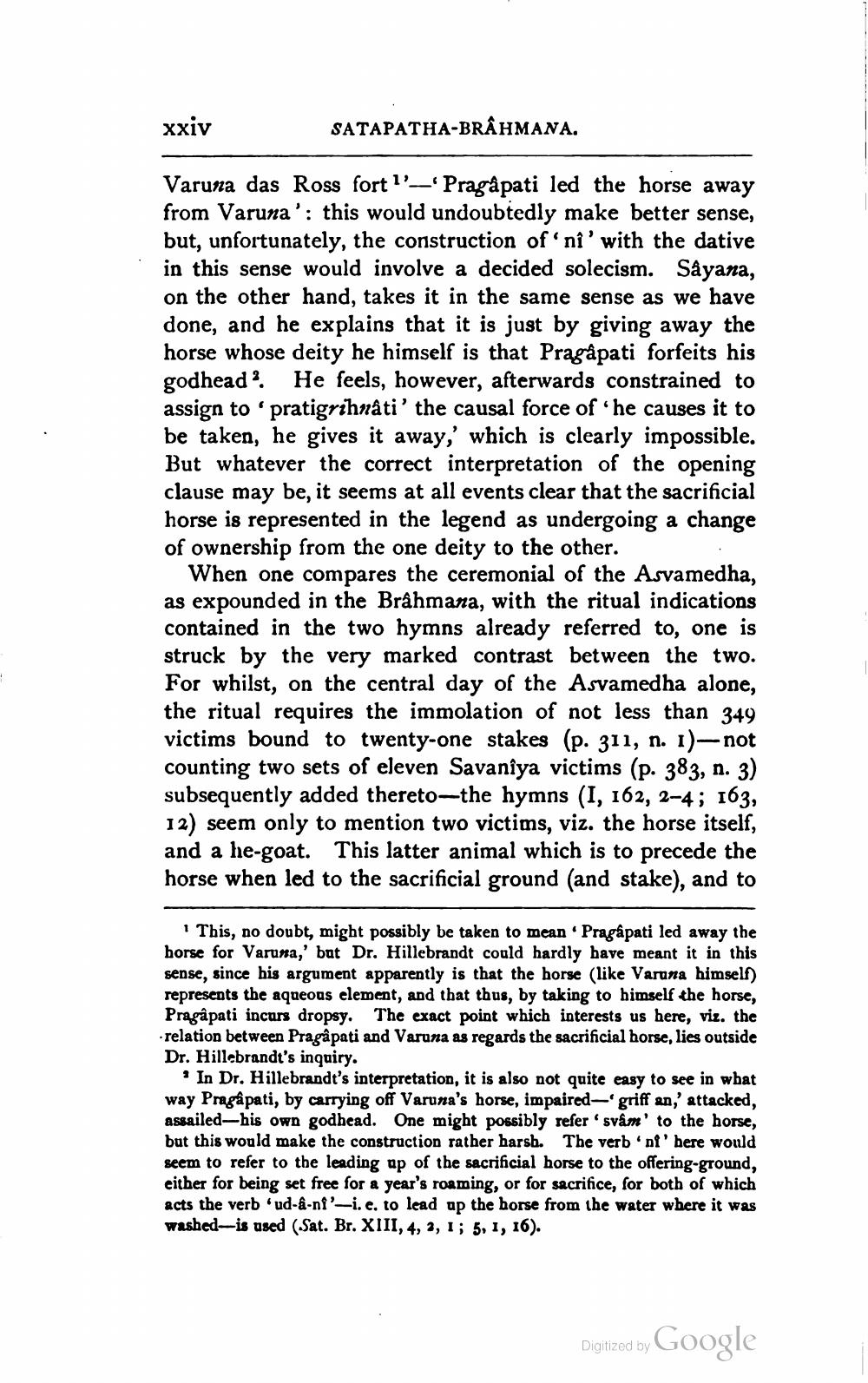________________
xxiv
SATAPATHA-BRAHMANA.
Varuna das Ross fort "'-'Pragâpati led the horse away from Varuna': this would undoubtedly make better sense, but, unfortunately, the construction of 'nî' with the dative in this sense would involve a decided solecism. Sâyana, on the other hand, takes it in the same sense as we have done, and he explains that it is just by giving away the horse whose deity he himself is that Pragâpati forfeits his godhead2. He feels, however, afterwards constrained to assign to 'pratigrihnâti' the causal force of 'he causes it to be taken, he gives it away,' which is clearly impossible. But whatever the correct interpretation of the opening clause may be, it seems at all events clear that the sacrificial horse is represented in the legend as undergoing a change of ownership from the one deity to the other.
When one compares the ceremonial of the Asvamedha, as expounded in the Brahmana, with the ritual indications contained in the two hymns already referred to, one is struck by the very marked contrast between the two. For whilst, on the central day of the Asvamedha alone, the ritual requires the immolation of not less than 349 victims bound to twenty-one stakes (p. 311, n. 1)—not counting two sets of eleven Savanîya victims (p. 383, n. 3) subsequently added thereto-the hymns (I, 162, 2-4; 163, 12) seem only to mention two victims, viz. the horse itself, and a he-goat. This latter animal which is to precede the horse when led to the sacrificial ground (and stake), and to
'This, no doubt, might possibly be taken to mean 'Pragâpati led away the horse for Varuna,' but Dr. Hillebrandt could hardly have meant it in this sense, since his argument apparently is that the horse (like Varuna himself) represents the aqueous element, and that thus, by taking to himself the horse, Pragâpati incurs dropsy. The exact point which interests us here, viz. the relation between Pragâpati and Varuna as regards the sacrificial horse, lies outside Dr. Hillebrandt's inquiry.
* In Dr. Hillebrandt's interpretation, it is also not quite easy to see in what way Pragâpati, by carrying off Varuna's horse, impaired-griff an,' attacked, assailed-his own godhead. One might possibly refer' svâm' to the horse, but this would make the construction rather harsh. The verb 'nt' here would seem to refer to the leading up of the sacrificial horse to the offering-ground, either for being set free for a year's roaming, or for sacrifice, for both of which acts the verb 'ud-â-n?'-i. e. to lead up the horse from the water where it was washed-is used (Sat. Br. XIII, 4, 2, 1; 5, 1, 16).
Digitized by
Google




